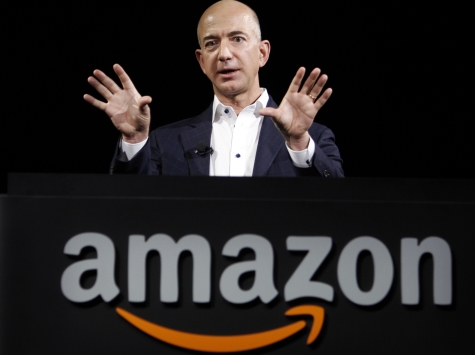Although lousy quarterly earnings would result in lower stock prices for most companies, shareholders gave Amazon a pass for over a decade as the high-tech company rapidly grew top-line sales to become America’s Everything Store. But in a year when the market has been red-hot for many tech start-ups, Amazon stock is down 30% since January, as the company is now seen as more of a store than a tech company.
Amazon’s third quarter (ending September 30) is always the weakest period for the year. But the loss of $437 million was more than double market expectations. The culprit was a surge in Amazon’s spending on new-product development, music and video licensing to support the company’s expansion strategy, which led to its largest quarterly loss in 14 years.
The wider loss came despite a spectacular 20% jump in revenue, to $20.6 billion. Amazon also took a $170 million inventory writedown on its Fire smartphone, which was released in July but is selling so poorly that the company has $83 million in inventory on hand. To add insult to injury, Amazon warned investors to expect another lousy earnings report next quarter. The stock tanked nearly 13% in after-hours trading, but opened down 10% and has recovered some of the loss.
The company had given prior warning that it would produce a big quarterly loss due to two new Kindle reader releases, the $970 million cash acquisition of Twitch Interactive, and the Fire smartphone that never clicked even with Amazon’s most loyal customers.
The good news is that Amazon still has a revenue growth of almost 23%, an extremely low debt-to-equity ratio of 0.29, and about 35% gross profit margins. The bad news is that corporate spending results in negative net profit margins.
Analysts are worried that the growth rates for Amazon’s key divisions focusing on merchandise and media have been cut in half. But after 20 years, and a revenue size of $21 billion, Amazon can no longer be considered a “disruptive” force in retailing.
Amazon’s web services business, known as AWS, did see disruptive sales growth of +90% year-over-year versus the most optimistic analysts’ growth expectations of +37%. Chairman Jeff Bezos continues to tout that AWS will eventually be the company’s biggest business sector, but with AWS’s stunning growth at only 5% of total revenue, it is not enough to have much positive impact on Amazon’s stock price. (I agree with Pacific Crest Research’s projections that AWS can easily double revenue every two years and quickly will become the most valuable piece of Amazon.)
Companies that rapidly grow revenues at the expense of earnings tend to arouse suspicion. But with a very strong gross profit margin, Amazon could stop spending money on growth and print huge earnings. Amazon’s strategy is clearly bad for short-term traders, but long-term investors may be handsomely rewarded in the future.
Chriss Street suggest that if you are interested in California business, please click on

COMMENTS
Please let us know if you're having issues with commenting.